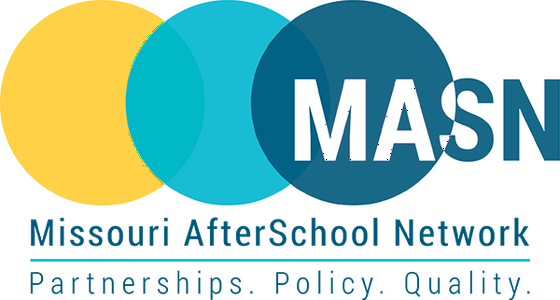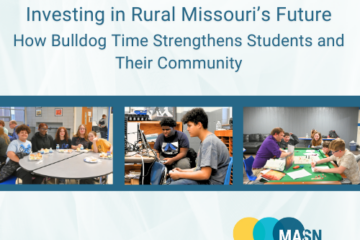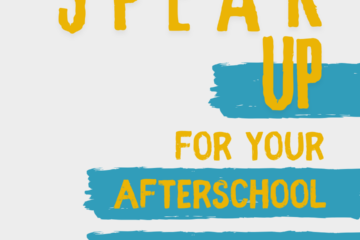By: Kya Nilges
In rural Pulaski County, Crocker R-II’s LEAP program is transforming afterschool opportunities for its students. When Jessica Stewart, principal of Crocker Elementary, saw a need in the community, she had to 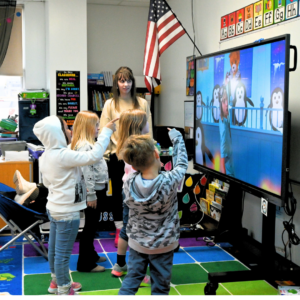 act. Stewart said, “If you’re not doing an afterschool program and still saying that a child is not getting their homework done or the kids need additional time with the material, what can you do to be able to provide that?… We know many families need these opportunities during the after-school time.”
act. Stewart said, “If you’re not doing an afterschool program and still saying that a child is not getting their homework done or the kids need additional time with the material, what can you do to be able to provide that?… We know many families need these opportunities during the after-school time.”
While urban and suburban areas often have multiple afterschool options, rural communities face unique challenges in providing these essential services. An America After 3PM report found that 59% of rural families would enroll their children in an afterschool program if available, yet only 11% of rural students participated in such programs.
“Youth centers, YMCAs, or the Boys and Girls Club—I don’t have any of those things close to me to partner with,” said Stewart. “These kids don’t have a YMCA, they don’t have a Boys and Girls Club; they have us.”
The Power of Rural School Partnerships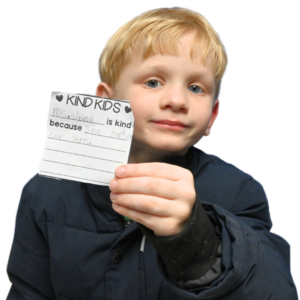
When faced with the challenge of creating a comprehensive afterschool program, Crocker R-II found strength in partnership. The district’s collaboration with nearby Richland R-IV exemplifies how rural schools can collaborate to overcome resource limitations. The Wallace Foundation reports that coordinated partnerships between rural districts can increase program sustainability by 40% and reduce operational costs by up to 25%.
“We worked closely with Richland,” Stewart shared. “We learned a lot from them because they had previous funding experience. We were able to compare their scores to our scores on our previous application. We could see what they were really looking for.”
Together, Richland R-IV and Crocker R-II received the Missouri Comprehensive Afterschool Learning (MOCAL) grant, which provided critical funding to create high-quality afterschool programs. With MOCAL support, they have invested in new resources, making afterschool more accessible for families who need it most. The partnership has strengthened both schools, fostering collaboration that helps maximize funding, share best practices, and serve more students across both communities.
The two districts also saw an opportunity to address a staffing challenge while helping nearby teachers. While LEAP’s afterschool program primarily employs their district’s school-day teachers, they couldn’t staff Fridays due to early dismissal for teacher meetings. This left local parents without child care options. Their solution was to recruit teachers from nearby schools with four-day weeks that are out on Fridays. “We had a problem and we couldn’t just tell our parents we couldn’t do it,” explained Stewart, emphasizing her commitment to meeting community needs.
Meeting Rural Community Needs
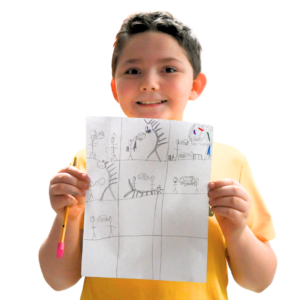 In rural communities, afterschool programs play a vital role in addressing the challenges families and students face. With a small student population and limited local resources, afterschool programs ensure children have safe, engaging, and enriching opportunities beyond the school day.
In rural communities, afterschool programs play a vital role in addressing the challenges families and students face. With a small student population and limited local resources, afterschool programs ensure children have safe, engaging, and enriching opportunities beyond the school day.
Transportation Challenges
Transportation poses a significant hurdle for rural communities. With long distances between homes, limited public transportation, and parents often commuting for work, getting students home safely after afterschool activities requires creative solutions.
Thanks to grant funding, LEAP now has a bus that leaves at 4:30 p.m. “A lot of families don’t have cars or have one vehicle for their whole family and rely on the bus,” Stewart said. Offering busing after their programming helps them serve more kids and alleviate families’ worries about picking their children up.
Building Connections Across Grades
Afterschool programs foster an environment where students feel a strong sense of belonging. In small districts, students often spend their entire school day with the same peers, which can limit their social interactions. Afterschool programs break these barriers by allowing students to connect across grade levels through shared interests.
Stewart explained, “We don’t get those opportunities to mix the kids during the school day. After school, third through fifth graders find other friends who may not be in their grade level. They’re in clubs together and have the same interests. So they don’t have that ‘no one is like me’ ideology because they’re in this club.”
This extends to older students as well. “In high school, I don’t know if all those kids knew that everyone liked eSports, but now they’re all in there together. When they pass them in the hallway, they know they are alike in some way, versus the stigma that we’re all different, alone in our world, and don’t have someone to relate to.”
This structure provides a vital support system, extending beyond academics. In the afterschool program, students thrive alongside others who share their passions. “You’ll see a kid in a classroom who may not relate to anyone in their class, but if you can get them around kids with the same interests, they feel like they belong to something. I like that this component is a big piece of our afterschool program.”
Program Opportunities and Growth
Stewart said they see “approximately 55–60 elementary students, depending on the day of the week,” and noted that two students had enrolled in the program just this week. Their program continues to grow across all levels, from elementary to high school.
LEAP is getting creative to get students involved. “For Junior High, we’re trying to get their interest,” explained Stewart. “We’ve asked our kids what they like to do and it’s hard for them,” expressed Stewart. “A broad array of activities hasn’t been here, so they don’t know what to ask for.
With student input in mind, they’ve purchased drones for the spring and are looking forward to adding archery and trap shooting. One thing that has kept students coming back is a newly established screen printing business. From concept to consumer, the students do it all. Stewart added, “There are a lot of opportunities there for leadership roles.”
Leadership opportunities in junior high improve decision-making skills and encourage students to take the initiative. They also help them build soft skills—like communication, teamwork, and problem-solving—essential for success in high school and beyond. For many students, this is the first opportunity they have to lead. Roles like this have a lasting impact on their motivation and self-esteem.
LEAP is exploring MASN’s Youth Workforce Initiatives (YWI) to further opportunities for its students. With a focus on entrepreneurship, career readiness, and post-secondary access, the YWI resources align with Crocker R-II’s goal of preparing 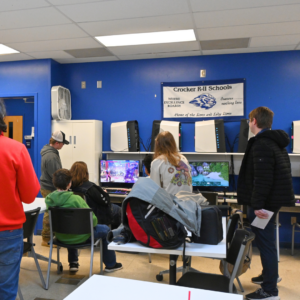 students for the future. “By engaging students in real-world skills, YWI sparks their interest in afterschool programs and drives attendance. It’s not just about what they do after the bell rings—it’s about what they can achieve because of it,” explains Aaron Banks, MASN’s YWI coordinator. This initiative helps foster a strongerconnection to education and community, ensuring students stay involved long-term.
students for the future. “By engaging students in real-world skills, YWI sparks their interest in afterschool programs and drives attendance. It’s not just about what they do after the bell rings—it’s about what they can achieve because of it,” explains Aaron Banks, MASN’s YWI coordinator. This initiative helps foster a strongerconnection to education and community, ensuring students stay involved long-term.
On the high school side, Crocker’s program has four main offerings:
- Volunteering at the local dog shelter
- eSports
- Weight-Lifting
- Dungeons and Dragons
Stewart said they see “about 20–30” high school students in the afterschool program. This level of engagement is remarkable for a district of Crocker’s size. She added, “We’re reaching a lot of older kids after school.”
LEAP offers many supportive measures to students in addition to programming. To prepare students for college, they helped them with their Free Application for Federal Student Aid (FAFSA). To do this, they hosted a FAFSA Frenzy night. Stewart beamed, sharing, “It was the biggest night we’ve had since I’ve been here.” She went on to explain, “FAFSA is hard. It doesn’t matter if you’re educated or not, it’s hard.”
Building Sustainable Community Partnerships
The National Partnership for Student Success reported that school-community partnerships play a crucial role in sustaining afterschool programs, with studies showing that collaborative efforts lead to increased funding stability and program longevity. Crocker R-II has embraced this approach through strategic partnerships with:
- Local Animal Shelter: Students engage in service learning by volunteering at the local animal shelter. This partnership provides hands-on experience with animal care while teaching responsibility and empathy. Stewart shared, “Our students help with cleaning and feeding and spend time socializing with the animals, which benefits both the kids and the shelter.”
- Public Library: The district partners with the local library to provide enrichment activities outside of the school setting. “We have our Public Library right across from us,” Stewart explained. “We’re partnering with them, where we send kids over as a group with a teacher. One day is a STEM Day, one day is Kids in the Kitchen for the younger grades. We’re utilizing their resources and knowledge. Then we’re also helping out the library because every kid through the door is numbers for her program. We’re helping each other.”
- MU Extension: University of Missouri Extension offers Kids in the Kitchen, a hands-on program that teaches kids about healthy eating. Students learn to make easy recipes and stay active!
- Beauty Shops: Local salons and beauty shops provide career exploration and practical life skills for students. “We’ve had local stylists come in to teach basic hairstyling techniques—like how to braid hair or do a simple haircut—things that some kids may not have learned at home,” Stewart said. “They’ve also done lessons on makeup application, helping students build confidence while learning a skill they can use in their daily lives or even as a future career.”
- Ozark Youth Sports League: “They use our gym here,” Stewart explained. “Kids can leave the afterschool program and go into practice. Then their parents don’t have to pick them up and take them somewhere else.” Students who play sports may not have been able to attend the program without this partnership.
- Pulaski County Health Department: The local health department’s ACTIVE Kids program offers health and wellness lessons, activities that promote active lifestyles, and fun prizes for students.
Key Takeaways for Rural Districts
The Wallace Foundation found that successful rural afterschool programs report an impactful return on investment that helps build their communities. For rural districts considering similar programs, Crocker R-II’s experience offers valuable insights:
- Start with Data
– Evaluate your community needs
– Keep track of participation and engagement
– Adjust your programming based on what’s working
- Build Strategic Partnerships
– Collaborate with neighboring districts
– Reach out to community organizations
– Utilize your existing resources, like teachers with specializations
- Focus on Sustainability
– Develop diverse funding streams by applying for as many grants as you can
– Build community support with local businesses and professionals
– Create programs that address specific local needs
“In school districts, there are a lot of things that are out of our control,” Stewart concludes. “But it’s about what you can change from out of your control to be in your control. You want to build a strong foundation everywhere for your child. Whether that’s during the school day, in afterschool programs, or with adults in their lives.”
Final Thoughts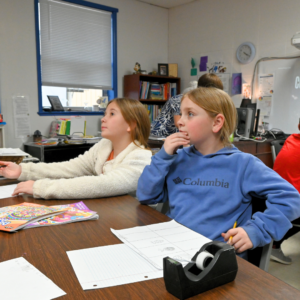
“I am very appreciative of the MOCAL grant and what we’ve been able to do with our kids,” Stewart reflects. “I don’t think there is a reason not to have something like this, and I’m glad we got it here. I hope we’re able to sustain it.”
The success of Crocker R-II’s afterschool program reminds us that meaningful change starts with a simple question: ‘What more can we do for our kids?’ By investing in afterschool, they’re investing in stronger students, stronger families, and stronger communities. The impact is real, the need is clear, and the opportunity is now. As Jessica Stewart reminds us, “Why not?”
